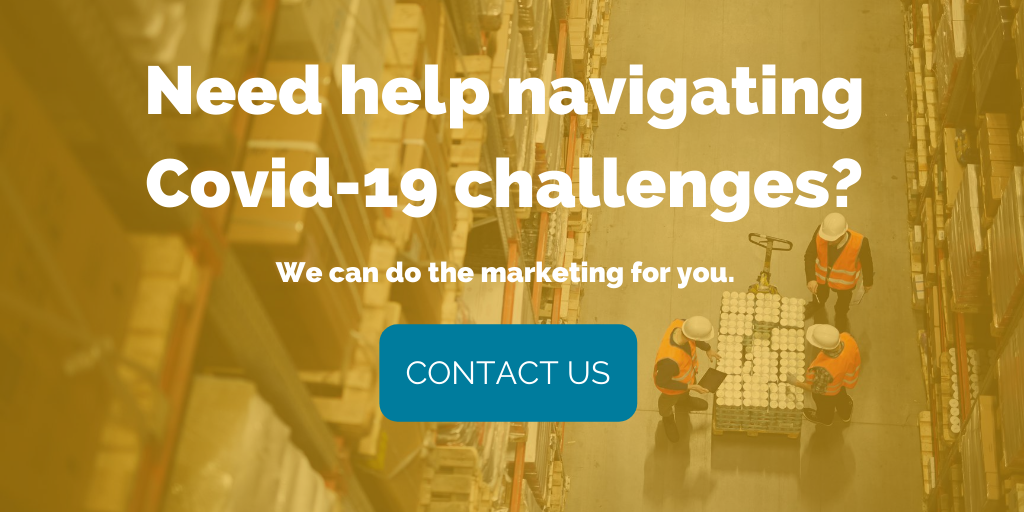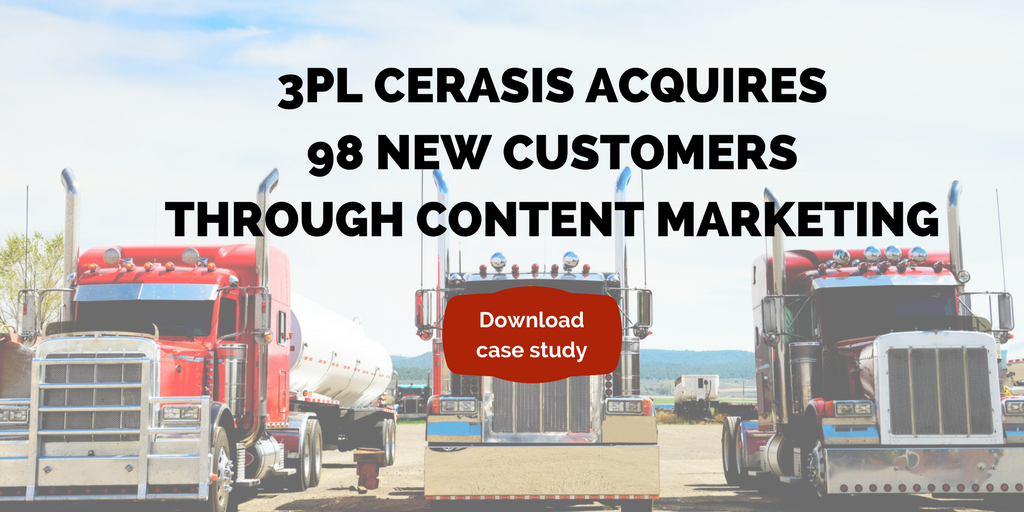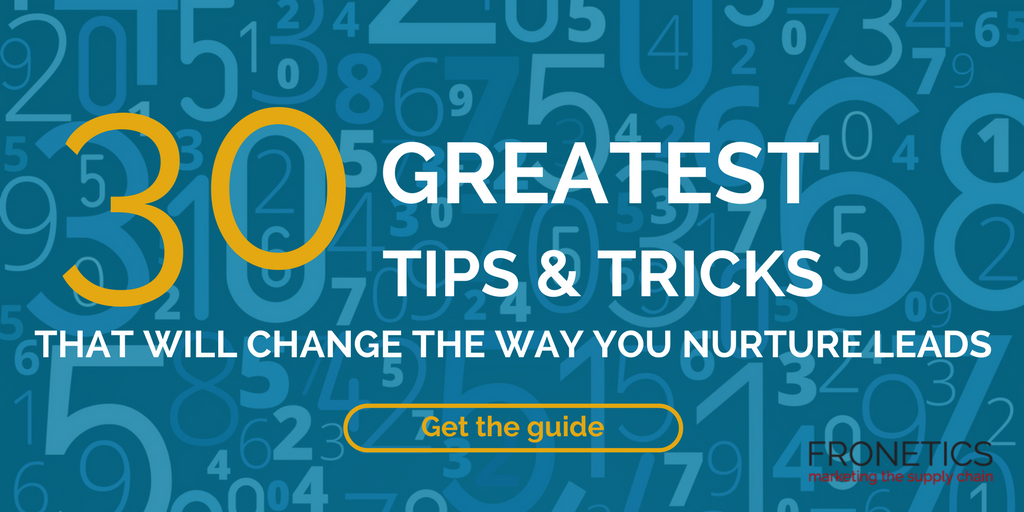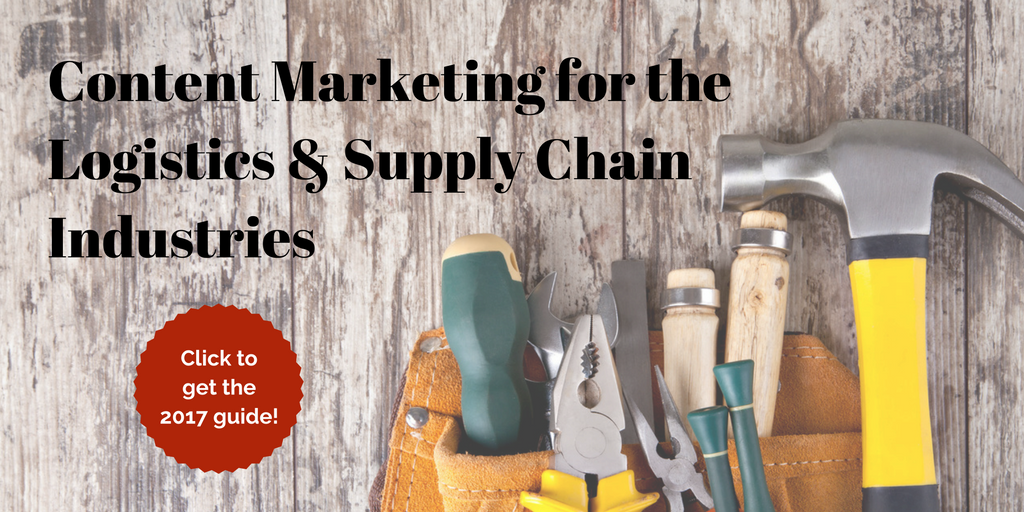


Key step to moving beyond survival mode: Revising B2B buyer personas
Company priorities have shifted in the wake of Covid-19. Revising B2B buyer personas is important to reaching them on the right terms.
The fallout of Covid-19 indefinitely altered the supply chain. Even months after the first shockwave, companies are adjusting to new circumstances that bring new priorities when they look for partnerships and make purchasing decisions.
If your organization went through a first round of marketing plan updates back in March to reflect the new reality, time has come to take a second look at revising B2B buyer personas. But we realize time is of the essence. Few companies have days to spare for the rigor of examining every detail of what makes a target audience tick.
Yet, it pays to get the personas just right. If your messaging is not calibrated to their current needs and pain points, the effort may be largely wasted.
An example:
Let’s say you offer an inventory solution and your marketing pitch and channels remain the same pre- and post Covid-19 even as shippers, carriers, and logistics managers say there may be a paradigm shift when it comes to future sourcing and inventory management. The fact is you may be missing an optimal opportunity to position your product in a whole new light that resonates with current buyers and also has the potential to reach an untapped audience.
5 questions that will help you revise B2B buyer personas
So, what is the quick route to revising B2B buyer personas to extract the most important details? It really comes down to nailing the answers to five key questions — while avoiding getting bogged down in trivia that has no bearing on how the persona relates to your product offering or service (leave the search for the perfect persona pic for another time).
1. What are the top three priorities of your buyer persona?
This question relates to the problems or objectives that the buyer dedicates time, budget, and political capital too. Although many end-users of supply chain solutions have been able to step off the rollercoaster ride of the past few months, some will be dealing with bumpy patches for the unforeseeable future while others are adjusting to a brand-new business landscape. A retailer that pre-Covid-19 was focused on speeding up deliveries may now be consumed with dealing with suppliers to secure inventory.
Question to ask yourself: How can you align your product/service with the new priorities of your target audience?
2. How does the buyer identify success?
Take a look at the tangible or intangible metrics and rewards that the buyer uses to measure success. Is the buyer hoping his or her contributions will lead to a promotion? Is the buyer focused on acquiring a certain number of clients, improving internal organization, or generating revenue growth? If an IT-manager before Covid-19 tried to demonstrate cost savings to upper management, focus may now have switched to successfully implementing cross-department workflows.
Question to ask yourself: Can your product/service play a role in helping the buyer achieve the desired success?
3. What are the challenges the buyer is trying to overcome?
The answer to this question has likely changed significantly for your buyers. A shipper that just a few months ago faced a predictable environment may now deal with a shortage of cross-docking facilities in addition to shipping restrictions that change across state lines.
Questions to ask yourself: Does your product or service fit into your buyer’s new reality? How can you alleviate the challenges?
4. What does the buyer’s journey look like?
Again, anticipate considerable adjustments. With the cancellation or postponement of trade shows that many view as one of the most important opportunities to network and connect, your buyers will have to take the search for solutions elsewhere. Since technology and service providers rank content assets as the most effective lead-generating tactic (trade shows come in a close second), it is not a far-fetched guess that buyers will seek out digital channels to research and initiate contact. In the process of revising B2B buyer personas, identify where your target audience is spending their time.
Question to ask yourself: Which channels will be the most effective in reaching potential buyers?
5. What decision criteria does the buyer use?
How will the buyer compare and contrast aspects or your product or service with the alternatives? In light of the pandemic impact, budgetary constraints could play a larger role than usual. The tendency to “make do” with current solutions is also a factor that many marketers will run into. What holds true for your buyers?
Question to ask yourself: Based on the decision criteria, how can you preempt questions that may come up?
Final word
With the help of your sales team, market research, and — ideally — interviews with actual buyers as well as prospects who eventually picked a competitor, you can craft relevant, up-to-date B2B buyer personas.
Knowing exactly who your audience is, what their goals and challenges are, where they look for information, and how they make purchasing decisions is the foundation of any marketing strategy. And when circumstances change so drastically as in recent months, revising B2B buyer personas is a crucial step to remain effective and, in the end, grow stronger.
Read more:
Cancellations call for trade show contingency plans (It’s urgent)
Supply chain marketing during Covid-19, the risk of cutting back
Covid-19 messaging strategy for supply chain companies: Getting the basics right

How to Use Paid Advertising in the Buyer’s Journey
Strategically integrating paid advertising in the buyer’s journey can help influence purchases and repeat sales.
Highlights:
- We advocate a primarily inbound strategy, you can boost the reach of your posts by investing in paid digital advertising.
- Your goal is to continue to engage with prospects and educate buyers as to why your product/service is better than your competitors’.
- 60% of consumers believed customer reviews were either trustworthy or very trustworthy — meaning that businesses that can accumulate positive reviews had a good chance of helping a customer make a purchase decision.
Let’s face it: the internet has completely changed the way B2B buyers are researching and making purchases. It’s becoming more crucial than ever to customize content for a potential customer’s journey through your funnel to help convert leads to sales.
The internet has given buyers the ability to research products and services, as well as compare competitors, without ever leaving the house. To keep up, B2B marketers need to align digital marketing efforts with the buyer’s journey to create and distribute content at the right moment.
While we advocate a primarily inbound strategy, you can boost the reach of your posts, ads, and videos by investing in paid digital advertising. And increased reach isn’t the only benefit. New statistics show that PPC visitors are 50% more likely to purchase something than organic visitors.
The key is to create interesting and informative ads and serve it to potential buyers at the right point in their research. Let’s look at how to integrate paid advertising in the buyer’s journey.
3 stages of the buyer’s journey
To stand out from your competitors, marketers need to know what types of paid ads to create and where to distribute them throughout the buyer’s journey. According to Brandon Stauffer, the typical buyer’s journey breaks into three stages:
- Awareness:A buyer figures out they have a problem and begin researching more about that problem. They are looking for resources to validate or better explain what their problem is.
- Consideration:Now the buyer knows the details of their problem. They begin more research to find a solution to their problem.
- Decision:The buyer has done research into solutions and is now comparing those solutions to make a final decision.
Now that you have the three key stages of the buyer’s journey, digital marketers need to pair specific paid ad campaigns with the right stages.
How to use paid advertising in the buyer’s journey by stage
Awareness stage
This is the very top of the sales funnel. All ads at this stage should focus on educating and engaging with prospects. There are two trains of thought when it comes to the awareness stage of paid ad campaigns:
- Create a campaign for prospects who might not know about your brand, products, or services
- Create an ad campaign that focuses on brand awareness and keeping your company at the top of the mind for those prospects that have heard of your brand
For each of these options, creating ads that appeal to your buyer personas will help get them in front of your targeted audiences.
Recommendation: Google search ads, Facebook and Instagram ads, highly visual content including video
Consideration stage
The second stage, consideration, is just that … Buyers are aware of your brand and are considering your products and services. Your goal is to continue to engage with prospects and educate buyers as to why your product/service is better than your competitors’. Remember, this isn’t the time for a hard sale. You want to bring buyers to the table by demonstrating what you can do for them.
Recommendation: Google Display ads, remarketing through Facebook, Instagram, LinkedIn and Twitter
Decision stage
Your prospect is almost ready to commit to a “conversion” but may need that extra push. Ads in this phase should communicate an incentive to get them to complete the conversion.
And don’t forget: people trust people. Customer testimonials can be a powerful tool in the decision stage of the buyer’s journey. HubSpot research found that 60% of consumers believed customer reviews were either trustworthy or very trustworthy — meaning that businesses that can accumulate positive reviews had a good chance of helping a customer make a purchase decision.
Recommendation: Remarketing on Google and social platforms, create visual customer testimonials
Have you tried integrating paid advertising in the buyer’s journey?
Related posts:
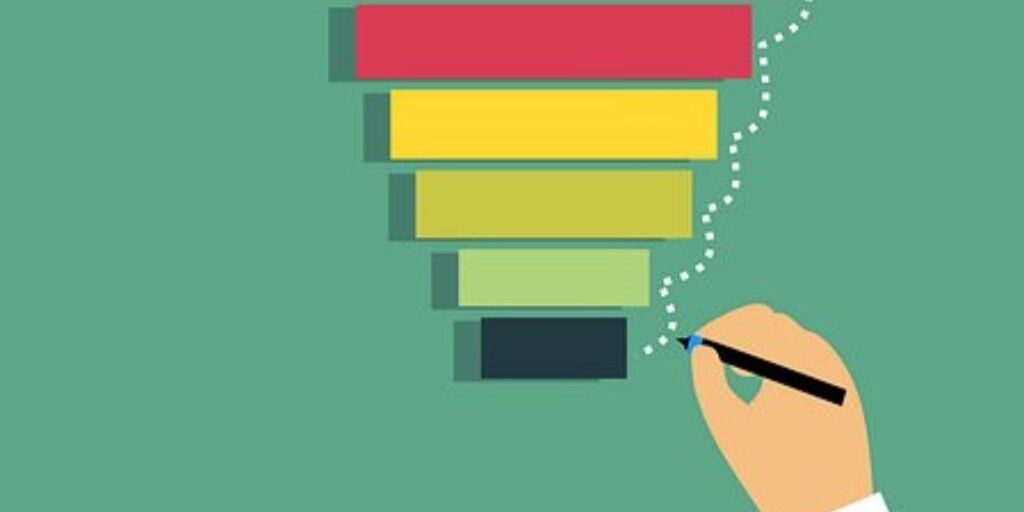
Infographic: Creating the Right Content for Lead Nurturing: ToFu, MoFu, and BoFu
Ushering qualified leads through the sales funnel requires the right kind of content at the right time. Here’s what kind of content you need for ToFu, MoFu, and BoFu.
Highlights:
- ToFu, MoFu, and BoFu are abreviations for top of funnel, middle of funnel, and bottom of funnel, respectively.
- ToFu content should be geared toward audience engagement and getting contact information – not converting.
- MoFu stage content should establish that your business can address a prospect’s specific needs.
Consider this statistic: 50% of qualified B2B leads aren’t ready to make a purchase when they initially convert. That means that in order to usher prospects effectively through the sales funnel, marketers need to deliver the right content for each stage of the buyer’s journey. That’s where idea of ToFu, MoFu, and BoFu content comes in.
In case you’re wondering, none of these three words refer to soy-based vegetarian snacks. Instead, ToFu, MoFu, and BoFu are marketing portmanteaux, meaning top of funnel, middle of funnel, and bottom of funnel, respectively. Effectively nurturing inbound leads depends on creating and delivering the right type of content for each stage of the funnel.
ToFu, MoFu, and BoFu: a primer
Before we talk about what kind of content to deliver to prospects at each stage of the buyer’s journey, let’s take a closer look at what the terms ToFu, MoFu, and BoFu refer to and what your goals should be at each stage.
ToFu: top of the funnel
At the top of the sales funnel (ToFu), your goal is to draw in a wide audience of prospective leads, increasing brand awareness and customer engagement. This is the awareness stage of the buyer’s journey, and it represents your first impression. Leads at the top of the funnel are getting a sense of what your business does and your brand identity.
For ToFu leads, your goal isn’t conversion but simply to obtain contact information and generate interest. Says Gaetano DiNardi, Director of Demand Generation for Nextiva, ToFu “is where strangers become familiar with your brand for the first time… At this stage of the game, you don’t care about conversions; you care about piquing intrigue.”
MoFu: middle of the funnel
The middle of the funnel (MoFu), is the consideration stage of the buyer’s journey. This can be a tricky and uncertain stage as your leads continue to engage with your brand and learn about your products and services but remain unready to commit to purchase. “MoFu is usually the most complicated funnel stage because of how hard it is to define,” says DiNardi.
Ideally, by the MoFu stage, you should have a clearer idea of who your leads are and what they’re looking for. Your focus should be on continuing to educate your leads and situating your products and services as the solution to the challenges and needs of your prospects.
BoFu: bottom of the funnel
The bottom of the funnel (BoFu) is the decision stage of the buyer’s journey. You’ve established a relationship with your prospect during the MoFu stage, and your lead is now turning to you for specific information about your products and services. It’s at the BoFu stage that leads are ready to make a purchasing decision.
This is the stage when it’s all about conversion. Your goal is to inspire your lead to convert, helping them to realize that your business has the solutions they need. It’s important to note here that your goal is not to “sell,” but rather to make sure your leads know that you’re there to help.
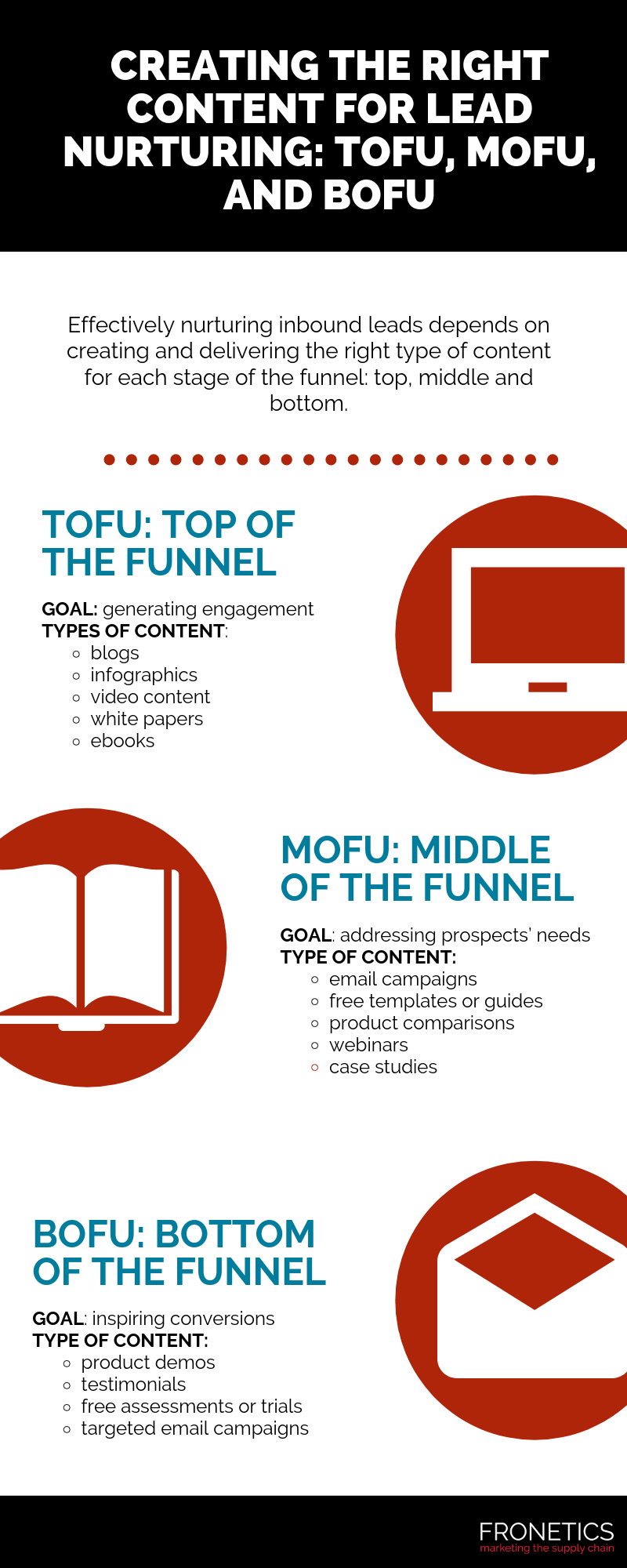
Optimizing ToFu, MoFu, and BoFu content for lead nurturing
Once you have a clear idea of the stages of the sales funnel and your goals for each, it’s time to consider the right types of content to ensure that prospects receive exactly the right message for each step of the buyer’s journey.
ToFu content: generating engagement
At the top of the sales funnel, where your goal is to engage your audience and collect contact information from qualified prospects, your content needs to educate leads and establish thought leadership. ToFu content shouldn’t pressure your audience to make a purchase, but instead should be geared toward providing information that speaks to needs, challenges, and questions common to your target audience.
According to Coralie Wood, Director of Demand Generation at LoginRadius, “Top-of-funnel content needs to be much more digestible and informative to ensure you are positioned as a thought leader.”
Some types of content that work particularly well for the ToFu stage:
- Blog posts
- Infographics
- Video content
- Whitepapers
- eBooks
MoFu content: addressing prospects’ needs
At this challenging middle stage, your content should begin to establish your business as the solution to a prospect’s specific needs and challenges. This is the consideration stage, and your lead is in the process of evaluating all available information to prepare to make a purchasing decision. Developing the relationship requires that your content be highly informative about how your business is ready to meet your prospect’s needs.
Because of the “wide net of interested leads who haven’t been fully qualified,” says DiNardi, “if you are too shameless about plugging your products or services, you’ll come across as pushy and likely to turn off buyers.” Instead, he suggests being “helpful and knowledgeable, while guiding your prospects into the right decision.”
Effective content types for the MoFu stage include:
- Email campaigns
- Free templates or guides
- Product-to-product comparisons
- Webinars
- Case studies
BoFu content: inspiring conversions
Now that your ToFu and MoFu content have attracted and nurtured a qualified lead, it’s time for your BoFu content to convince your lead to convert. It’s the closing stage of the buyer’s journey, which means marketers should be directing prospective buyers toward content that sells. This type of content is about cementing a decision and helping your leads recognize that your business has the right solutions.
“It’s important to note here that BoFu content can also lead directly into validation. This starts to cross the line from traditional content marketing to things like product marketing and customer testimonials,” says Mike Baker, marketing director at Lola.com. “As you work closer to the bottom-of-the-marketing funnel, your content should shift from purely educational to a more consultative, product-focused and a ‘show-don’t -ell’ style of marketing.”
BoFu content types geared to inspiring conversions include:
- Product demos
- Case studies and testimonials
- Free assessments or trials
- Targeted email campaigns
Related posts:
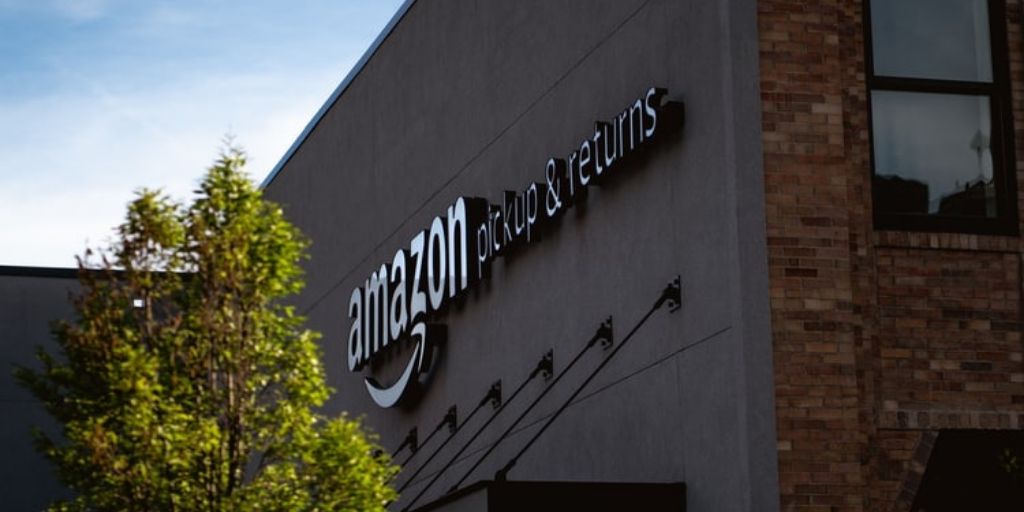
Is an Amazon Logistics Service Finally Launching?
The long-rumored launch of an Amazon logistics service is unlikely to be rumor much longer. Here’s what 3PLs need to know.
Highlights:
- Amazon recently invited select shippers to use a service called Amazon Shipping.
- The retail giant boasts a global logistics footprint that covers 243.5 million square feet – and counting.
- Amazon’s hiring plans offer insights into its plans for logistics services.
Rumors of an Amazon logistics service have been swirling for nearly two years. In February 2018, the Wall Street Journal predicted that Amazon was planning to launch a “delivery service that would vie with FedEx, UPS.”
In April of this year, Amazon re-stoked discussion of its long-rumored logistics service by inviting select shippers in three major U.S. cities to use a service called Amazon Shipping. While more recent reports indicate that this Amazon logistics service may not be attractive to all shippers, it’s time to consider the possibility that Amazon is about to become a player in the logistics sector.
The growth of Amazon Logistics
Shortly before the April 2019 reports surfaced, Amstrong & Associates Inc., a logistics industry research and consulting firm, published a detailed report on Amazon Logistics. Summing up the report’s conclusions, A&A President Evan Armstrong said, “Amazon is acting increasingly like a 3PL.”
Armstrong’s report estimates that Amazon provides logistics services for 12% of B2C shipments worldwide, noting that third-party sellers account for more than half of all units sold through the Amazon platform. Eytan Buchman, vice president of marketing at Freightos, points to Amazon’s massive logistics footprint at 243.5 million square feet.
The network of warehouses and distribution centers that make up Amazon Logistics comprises 386 facilities in the U.S. alone. That includes 159 fulfillment centers, 47 inbound and outbound sortation hubs, 52 Prime Now hubs, and 115 local delivery stations, according to data compiled by Montreal-based research firm MWPVL International.
Amazon CEO Jeff Bezos has often emphasized the importance of “how fast [a product] will ship or be available for pickup,” as in his 2017 letter to shareholders. As evidence of Amazon’s focus on logistics, Buchman points to the company’s 2018 competition assessment, identifying “companies that provide fulfillment and logistics services for themselves” as competition.
Yet experts remain divided when it comes to labeling Amazon outright as a 3PL. Armstrong, for example, doesn’t place Amazon in the same category as 3PLs because logistics “is just part of their business.” On the other hand, Satish Jindel of SJ Consulting Group estimates that Amazon generated $42.5 billion in gross revenue from logistics services worldwide in 2018, making it the world’s leading 3PL.
Hiring plans for Amazon Logistics
In doing a deep dive into the nearly 17,700 full-time vacancies listed on Amazon’s website, Buchman formed some interesting insights into Amazon’s plans. Here are the key points he found:
- 920 (or 5%) of the 17,700 jobs listed are in the logistics and transportation sector.
- About half of these logistics and transportation jobs are in the U.S.
- More than half of the vacancies require at least 4 years’ experience.
- More than 10% require at least 7 years’ experience.
- 14 jobs require more than 10 years’ experience.
Based on his analysis, Buchman believes that it’s “clear exactly where the company is moving – cross-border trade and international logistics, while improving courier delivery.”
What does Amazon Logistics mean for the sector?
The Amazon effect is the subject of much discussion, speculation, and anxiety for manufacturers and distributors, and Amazon Logistics is no exception. Other 3PLs, such as FedEx, have publicly insisted that Amazon poses no threat – despite statements to the contrary from Wall Street analysts.
In contemplating where Amazon logistics leaves other 3PLs, Buchman concludes that while “few operate at the same scope as Amazon’s level of business… most do already have the expertise, physical networks, and internal technological capabilities to differentiate.” He concludes on the relatively gloomy note: “Doubling down on improving user experience had recently become the way to stay ahead. But now, it’s looking like the way not to fall behind.”
At Fronetics, we’ve written before about the challenges that the Amazon effect poses for supply chain and logistics companies – and why it’s ultimately a net positive. Amazon’s disruptions to the sector are likely to continue, and, as they do, the rest of the industry has the opportunity to refine and sharpen its practices.
Related posts:

